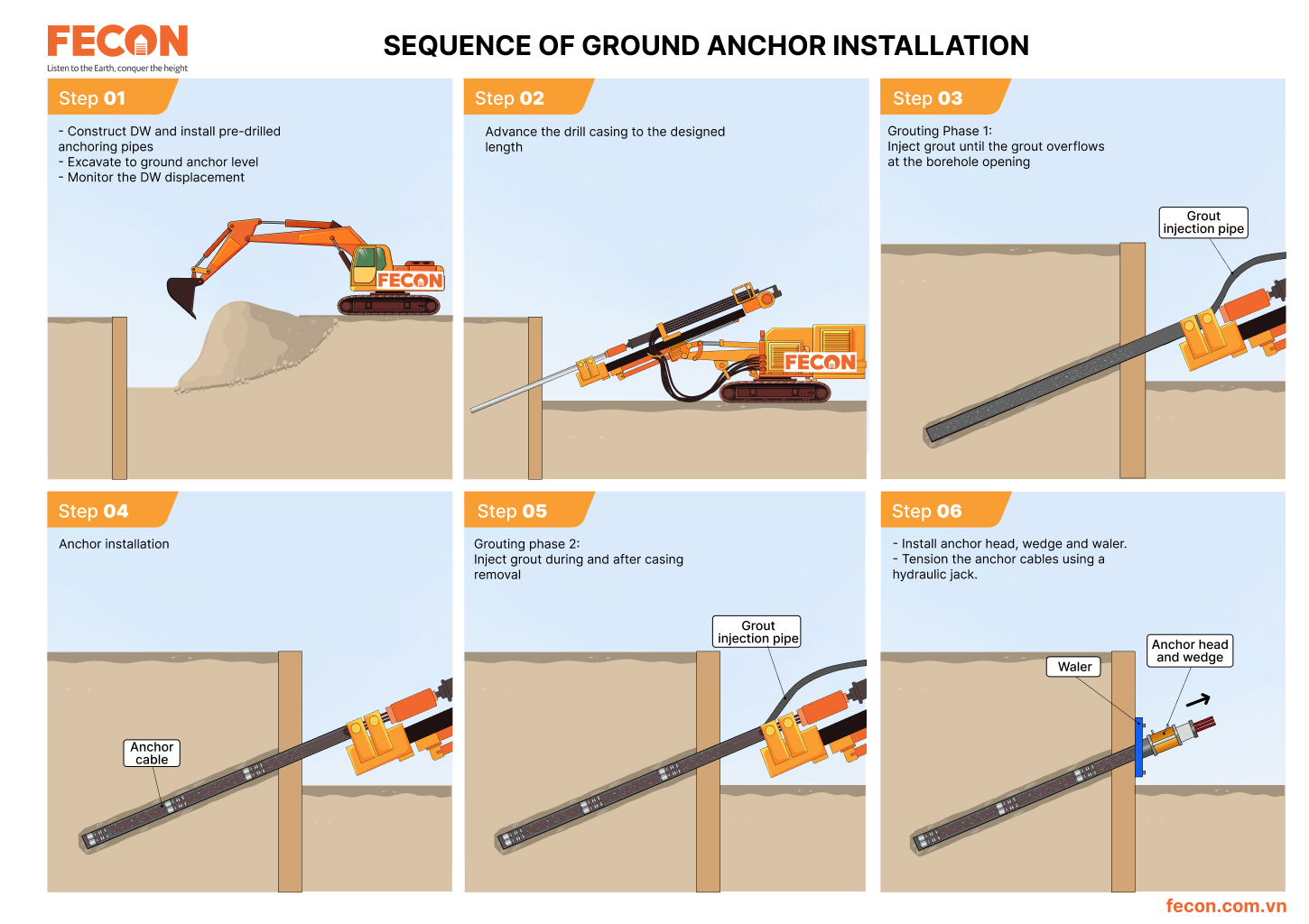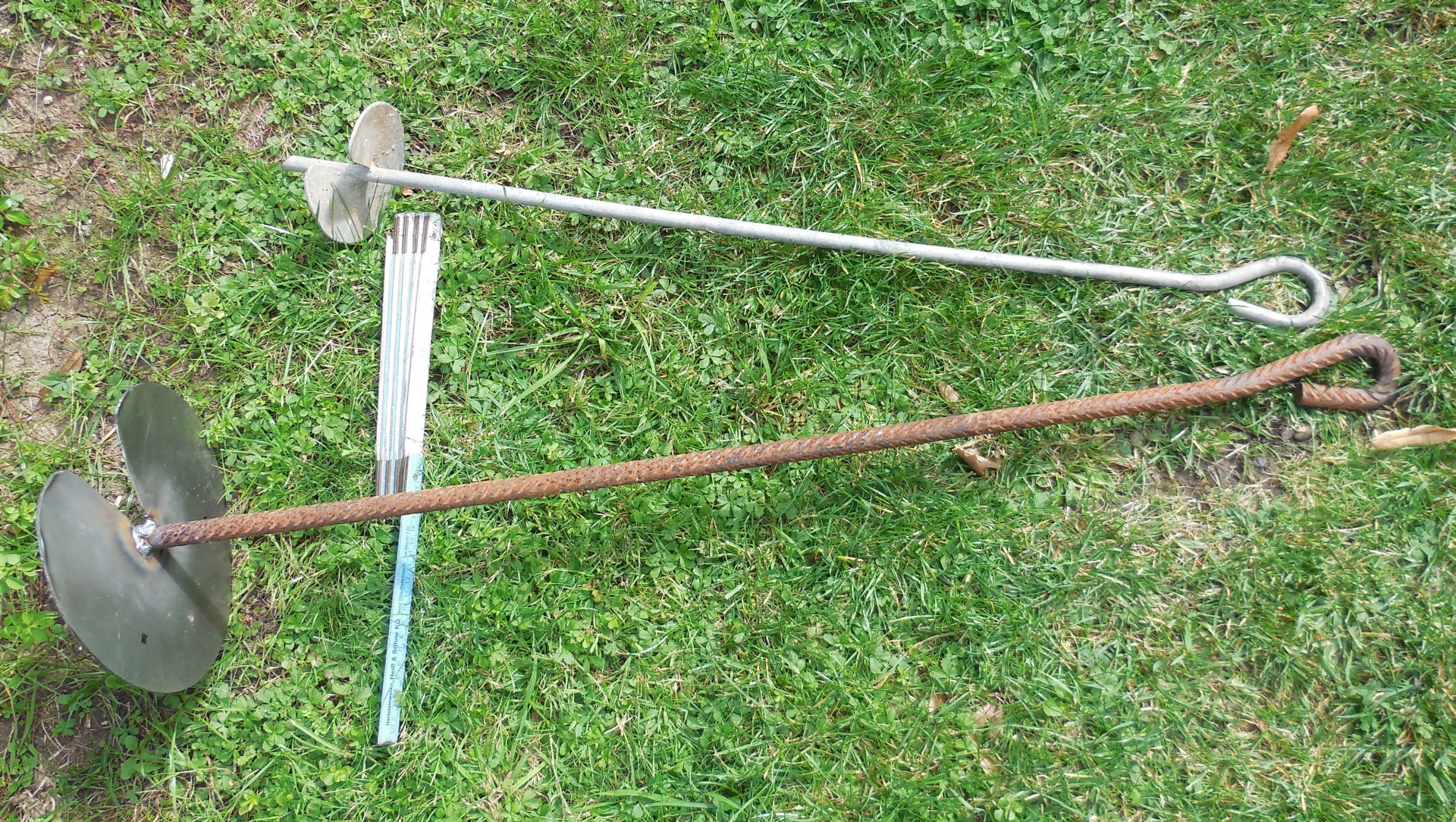Exactly How Heavy-Duty Earth Anchors Work: A Comprehensive Overview to Soil Anchoring Solutions
Heavy-duty Earth supports play an essential duty in supplying security and support in numerous building and construction applications. By embedding deeply into the ground, they withstand vertical and lateral forces successfully. Different types of anchors deal with various dirt conditions, making them versatile. Recognizing their mechanics and installation methods is necessary for making best use of performance. What variables influence their effectiveness, and just how do they compare to standard techniques? The answers might amaze you.
Recognizing Sturdy Earth Anchors
Sturdy Earth supports work as essential elements in numerous construction and landscaping tasks, offering stability and support in challenging dirt problems. These supports function by being embedded right into the ground, where they resist upright and lateral pressures. Their layout permits secure accessory to frameworks, ensuring they continue to be anchored against dirt motion or outside loads.The performance of sturdy Earth supports mainly depends upon the sort of dirt and the support's installation depth. Correct setup methods are crucial, as they determine the anchor's holding capacity. Environmental factors, such as dampness and freeze-thaw cycles, can additionally impact performance.These supports are frequently utilized in applications ranging from protecting fencings and maintaining wall surfaces to maintaining short-lived structures during unfavorable weather condition conditions. Recognizing the principles behind sturdy Earth anchors is important for experts seeking to improve the resilience and security of their projects.
Sorts Of Heavy-Duty Earth Anchors
Different sorts of durable Earth anchors are created to satisfy specific needs based upon soil problems and task requirements. Helical anchors, featuring screw-like blades, work in softer soils, offering high load capabilities and very easy setup. Driven supports, which are hammered right into the ground, appropriate for rocky surfaces and give prompt load support. Tie-back supports are typically used in maintaining wall surface applications, allowing for lateral support by anchoring right into the ground at an angle. One more type is the cast-in-place support, ideal for concrete applications, as they are incorporated right into foundations for enhanced stability. Soil screw anchors are flexible alternatives that can be utilized in numerous soil kinds, providing reliable tension and compression capabilities. Each type offers distinctive applications, ensuring security and safety in construction and landscaping jobs. Recognizing these options permits for educated choices in selecting the proper Earth securing option.
The Mechanics of Dirt Anchoring

Comprehending the mechanics of soil anchoring requires an exam of various sorts of Earth anchors and their setup strategies. Each support type provides special characteristics that influence its effectiveness in various soil problems. Proper setup techniques are essential for maximizing the anchoring system's stability and efficiency.
Types of Earth Anchors
Earth supports, vital elements in dirt anchoring systems, been available in a number of types, each developed for details applications and dirt problems. The most usual kinds include screw supports, which are turned into the ground, supplying strong lateral resistance. Helical anchors feature blades that enable reliable setup in numerous soil types, making them suitable for both temporary and long-term applications. Driven anchors, usually made from steel, are inculcated the soil and work in rough or dense environments. Auger supports make use of a helical style to facilitate setup in softer dirts. Plate anchors are composed of a level plate hidden flat, distributing load over a bigger location, ideal for applications needing high tons abilities in cohesive soils.
Installment Techniques Discussed
Appropriate installment strategies are crucial for the performance of dirt anchoring systems. The procedure generally begins with site assessment, confirming the picked place can sustain the anchor's load. After figuring out the right support kind, correct opening depth and angle have to be developed. The installment includes driving the anchor into the ground making use of specialized devices, such as hydraulic or hand-operated motorists, to accomplish ideal embedment. Post-installation, tensioning the anchor is essential to ensure stability; this is commonly confirmed with lots screening. Furthermore, bordering dirt conditions must be monitored to avoid displacement. Following these methods not just enhances the anchor's efficiency but likewise extends its life expectancy, offering reliable support for numerous applications.
Applications of Heavy-Duty Earth Anchors
While heavy-duty Earth supports are typically connected with building and landscaping, their convenience reaches a selection of applications across various industries. In civil engineering, they give essential assistance for keeping walls, ensuring stability in locations prone to dirt erosion. The aquatic sector utilizes these supports for securing anchors and marinas, avoiding activity triggered by trends and currents. In addition, in the telecommunications sector, sturdy Earth supports are considerable for stabilizing cell towers and various other high frameworks against wind forces. Agricultural applications likewise profit, as these supports can secure frameworks like greenhouses and livestock fencing, guaranteeing they stand up to extreme weather condition conditions. In eco-friendly energy projects, such as wind ranches, Earth anchors play an essential duty in index securing turbine foundations, boosting overall security and performance. This wide series of applications highlights the flexibility and reliability of sturdy Earth anchors across different fields.
Advantages Over Conventional Anchoring Techniques
Although standard anchoring approaches have long been relied upon for stability, durable Earth supports use considerable advantages that improve efficiency and effectiveness. One significant advantage is their premium load-bearing capacity, which permits them to stand up to greater pressures without failing. This stamina makes them suitable for requiring applications, such as in construction and energy installations.Additionally, sturdy Earth supports are made for much deeper installation, supplying better security in different soil problems, including loose or sandy dirts. Their resistance to corrosion and ecological variables assures a much longer life-span and minimized maintenance expenses contrasted to standard methods.Moreover, these supports can be mounted with very little disruption to the surrounding location, preserving the honesty of the landscape. In general, heavy-duty Earth supports offer a reliable and reliable option for securing needs, going beyond the constraints frequently connected with typical anchoring strategies.
Setup Process and Best Practices
The installment process for soil anchoring remedies begins with detailed prep work and site evaluation to ensure peak performance. Following this, a detailed installment overview provides clear directions for reliable execution (Manta Ray anchors). Sticking to these ideal methods is essential for accomplishing reliable and resilient anchoring results
Preparation and Site Analysis
Effective prep work and thorough site examination are important action in the setup of soil anchoring remedies. Prior to installation, the soil type need to be assessed to establish its bearing capability and viability for securing. Performing a geotechnical study can provide essential details regarding soil structure, dampness levels, and potential ground motion. In addition, determining existing structures, vegetation, and utilities is vital to stay clear of interference during setup. The area must be cleared of particles and challenges to guarantee safe access for equipment. Weather ought to also be kept track of, as negative conditions can affect both security and installment efficiency. By thoroughly preparing the website and examining all relevant variables, the chance of successful anchor performance is substantially raised.
Step-by-Step Setup Overview
A detailed installation procedure is vital for achieving perfect performance of dirt securing services. The setup starts with picking the ideal support type and ensuring the website is clear of particles. Next off, correct opening placement is determined based on lots requirements. Once the location is established, openings are pierced to the defined depth and size using the correct tools. The support is after that put into the hole, making certain it is lined up appropriately. After securing the support, dirt is backfilled and compressed to enhance stability. It is necessary to follow manufacturer guidelines throughout the procedure. A post-installation evaluation validates that the anchors are appropriately positioned and functioning as meant, providing trustworthy assistance for the desired application.

Maintenance and Inspection of Earth Anchors
Regular upkeep and assessment of Earth anchors are crucial for making certain long-term performance and stability. Periodic checks enable the early detection of problems such as deterioration, loosening, or soil movement. Assessors need to search for signs of rust or deterioration on the support elements, particularly at the connection points. Furthermore, the surrounding soil ought to be evaluated for disintegration or changes in wetness material, which can influence support effectiveness.It is advisable to establish a regular assessment routine, preferably at the very least yearly, relying on ecological problems. During examinations, all noticeable parts should be cleansed to eliminate dirt or debris that can conceal possible problems. Any type of indicators of distress, such as tilting frameworks or uncommon settling, must prompt instant assessment. Proper documentation of assessments can aid in monitoring support efficiency over time and assist in prompt maintenance activities, guaranteeing the anchors continue to be reputable and practical.
Frequently Asked Concerns
What Products Are Heavy-Duty Earth Anchors Typically Made From?
Heavy-duty Earth anchors are typically built from sturdy products such as galvanized steel or stainless steel, making sure toughness and resistance to rust. These products supply lasting support and stability in numerous linked here soil conditions and applications.
How Do Dirt Conditions Affect Anchor Efficiency?
Dirt problems substantially affect anchor efficiency. Variables such as soil kind, moisture content, and compaction affect the support's grip and stability, with natural soils commonly supplying better resistance than loose or sandy soils, affecting general efficiency.
Can Heavy-Duty Earth Anchors Be Reused After Removal?
Heavy-duty Earth supports can be recycled after removal, offered they are evaluated for damage and wear. Appropriate cleaning and maintenance boost their long life, ensuring efficient performance in succeeding setups when conditions enable risk-free reinstallation.
What Are the Environmental Influences of Utilizing Earth Anchors?
The environmental effects of using Earth anchors include prospective dirt disturbance, disturbance of regional environments, and possible contamination of groundwater. Nonetheless, if made use of properly, their benefits typically surpass these worries, advertising security in different applications.
How Do I Pick the Right Anchor for My Project?
